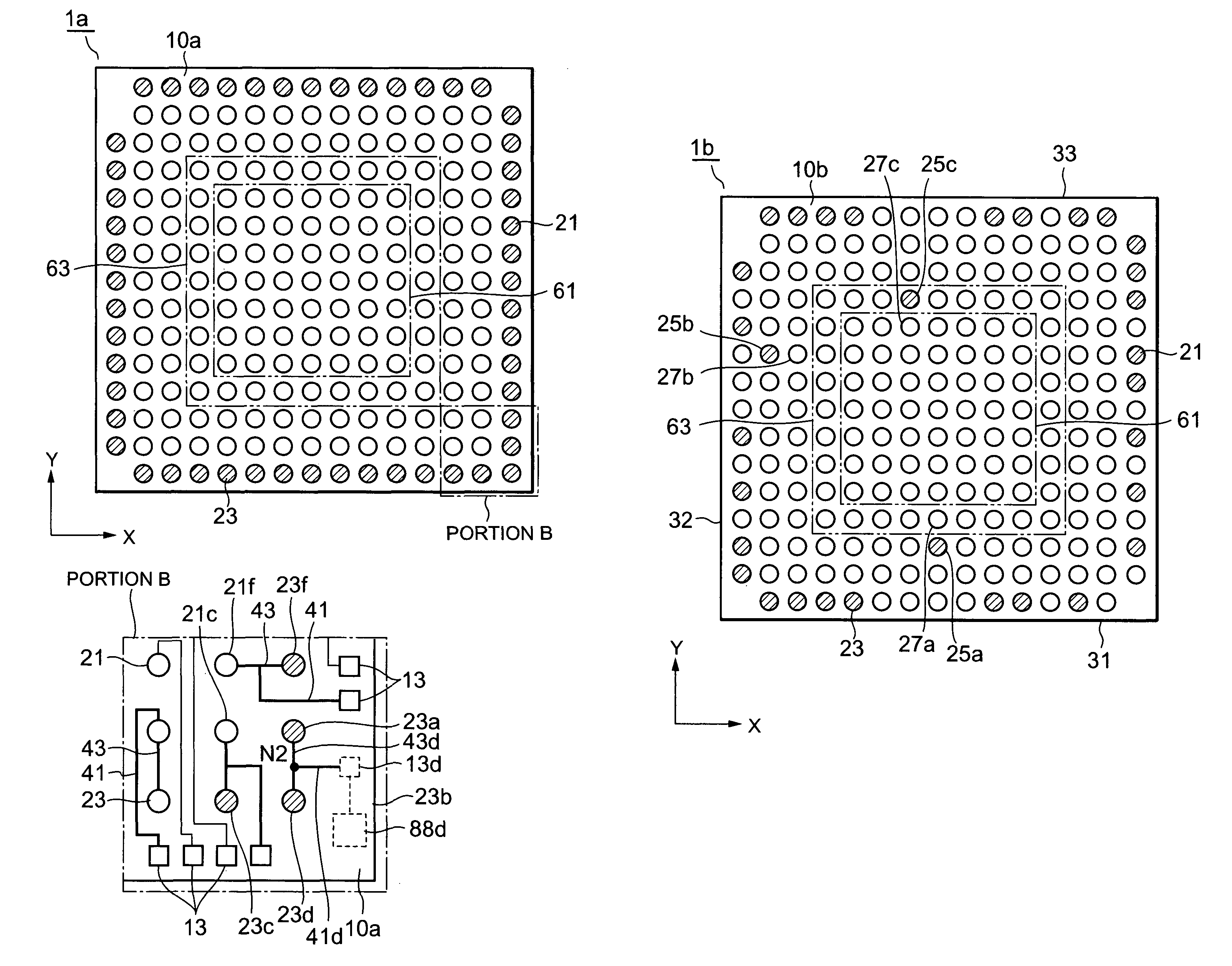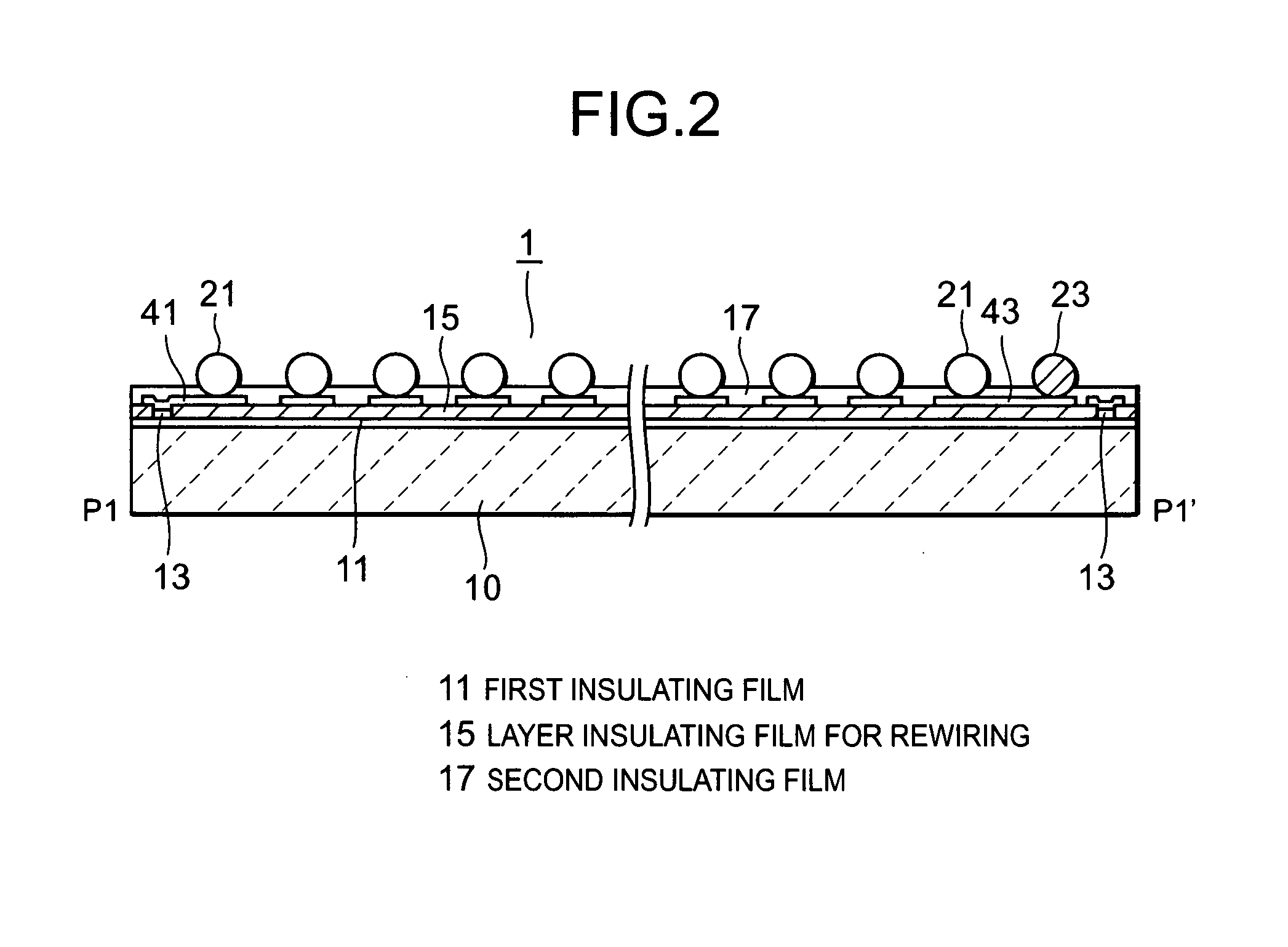Semiconductor device
a technology of semiconductors and devices, applied in semiconductor/solid-state device testing/measurement, semiconductor devices, semiconductor/solid-state device details, etc., can solve problems such as gap discharge phenomenon, damage or breakdown of internal elements connected to bump electrodes, and discharge caused, so as to prevent discharge, increase connection strength, and suppress excessive accumulation of charge
- Summary
- Abstract
- Description
- Claims
- Application Information
AI Technical Summary
Benefits of technology
Problems solved by technology
Method used
Image
Examples
Embodiment Construction
[0038]Referring to the accompanying drawings, the present invention will now be described.
[0039]FIGS. 1a–1b are drawings showing an embodiment of the semiconductor device according to the present invention, where part (a) is a schematic plan view on the side of bump formation face of an FCLSI, and (b) is an enlarged plan view of portion A in part (a). FIG. 2 is a schematic sectional view along line P1–P1′ in FIG. 1(a). Moreover, FIGS. 3a–bb shows schematic drawings of an example of the semiconductor chip forming the FCLSI, where part (a) and part (b) are respectively examples of a plan view showing the internal constitution of the chip and an electrostatic protection circuit.
[0040]Referring to FIG. 1 to FIG. 3, an LSI 1 of this embodiment is equipped, on the side of element formation face of a semiconductor chip 10 where external connection pads (referred to as PDs hereinafter) 13 being chip electrodes are formed on desired elements, wirings (neither are shown) and a first insulatin...
PUM
 Login to View More
Login to View More Abstract
Description
Claims
Application Information
 Login to View More
Login to View More - R&D
- Intellectual Property
- Life Sciences
- Materials
- Tech Scout
- Unparalleled Data Quality
- Higher Quality Content
- 60% Fewer Hallucinations
Browse by: Latest US Patents, China's latest patents, Technical Efficacy Thesaurus, Application Domain, Technology Topic, Popular Technical Reports.
© 2025 PatSnap. All rights reserved.Legal|Privacy policy|Modern Slavery Act Transparency Statement|Sitemap|About US| Contact US: help@patsnap.com



